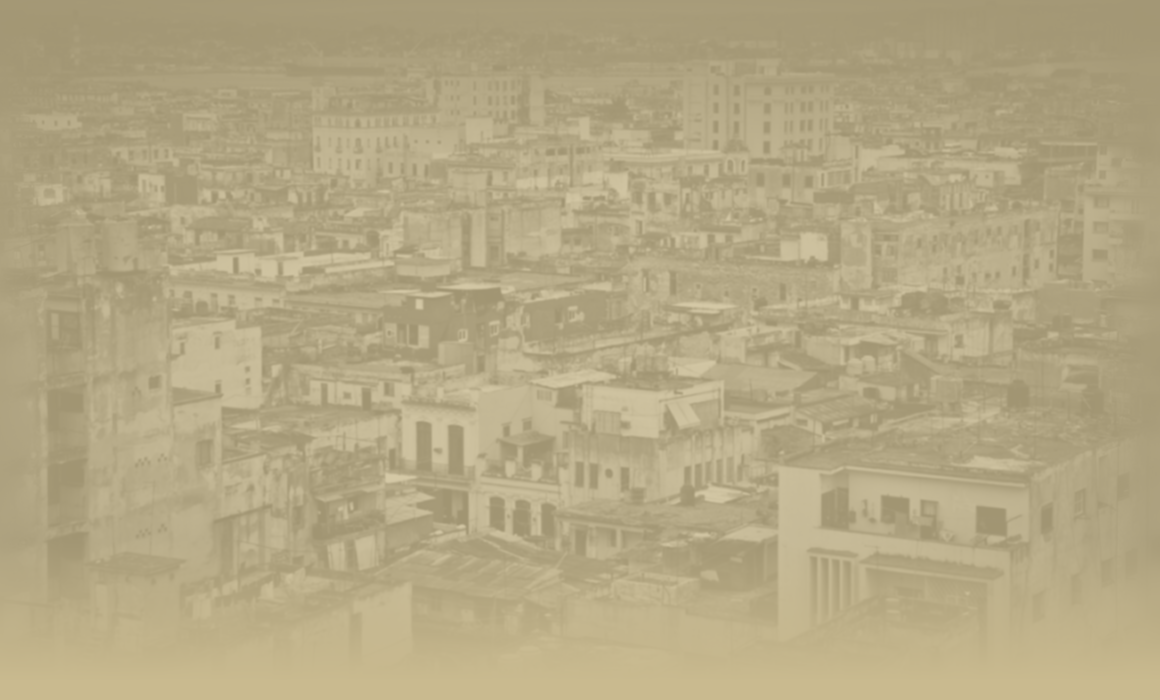
This online exhibition offers an overview of the guayabera’s history, one that traces the shirt’s journey through Cuba, Mexico and the United States, and from humble beginnings to fashion phenomenon.
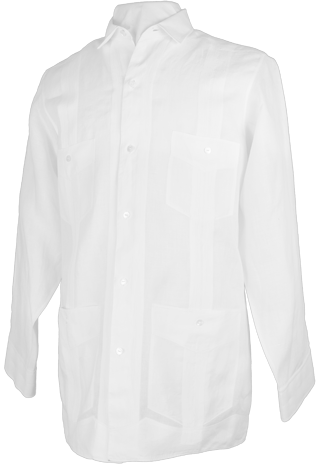
Men wearing guayaberas are a familiar sight in Latin America and the Caribbean. A traditional piece of menswear, the shirt is distinguished by its four front pockets and two vertical stripes of pleating and/or embroidery. Its widespread usage and distinctive appearance has made it the most iconic piece of clothing associated with the cultural life of Latin American and Caribbean populations worldwide.
Despite this far-reaching popularity, the circumstances concerning the guayabera’s origin and stylistic evolution are indeterminate and widely dispersed across a number of sources. The Guayabera: A Shirt’s Story weaves together the threads of the shirt’s history from an array of different legends, archival records, advertisements, historic photographs, articles and other sources from different centuries.
+ At left: A classic version of the guayabera. Circa 1948.
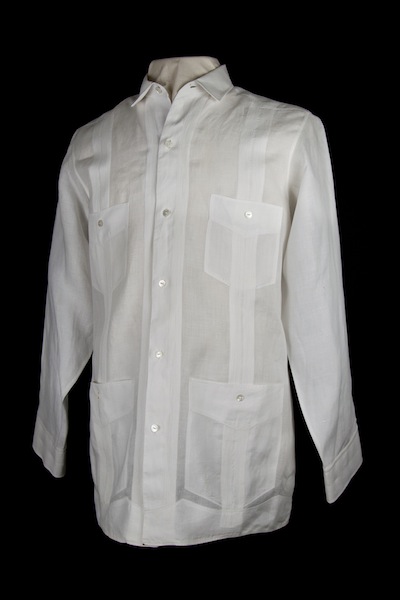
Loan courtesy of Ramón Puig Guayaberas
Linen. Ramón Puig.
The widespread usage and long-term popularity of the white, long sleeve, linen version of the guayabera has made it time-honored. Legendary tailor Ramón Puig crafted this classic example, made in the town of Zaza del Medio during the heyday of the guayabera’s use in Cuba. Zaza del Medio is located in Sancti-Spiritus, the region of Cuba most regularly claimed as the birthplace of the guayabera.

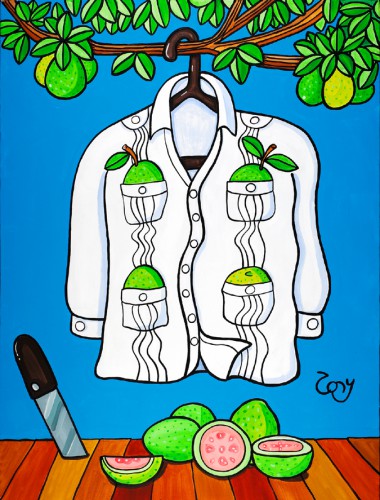
How many names can one shirt have? A lot, if that shirt is the guayabera, which is also known widely as the “Mexican wedding shirt.” Other names for the guayabera that exist in different countries include the “chacabana,” used in the Dominican Republic, the “shirt-jac,” as it is called in Trinidad, and the “guayabel,” as it is referred to in Haiti.
The exact origin of its most common name, “guayabera,” however, is uncertain. The most popular belief states that the garment’s name is a derivative of the Spanish word “guayaba,” meaning “guava.”
This often-repeated belief suggests that the storage of guavas in the shirt’s pockets may have been an early use of the garment. Most versions of this story identify its setting as Sancti-Spiritus, Cuba, the locale most often claimed as the shirt’s birthplace. Inhabitants of this city on the Yayabo River have historically been referred to as “yayaberos” and “yayaberas.” Other sources refer to these inhabitants as “guayaberos” and “guayaberas.” Although not easily verified, these possible explanations for the shirt's name continue to be the most widely accepted among people familiar with the guayabera.

Loan courtesy of Tony Mendoza.
Painted by Tony Mendoza.
In this work, Cuban-American painter Tony Mendoza represents the popular belief that one early use of the guayabera’s pockets was to store guayabas (guavas), a function that may have inspired the shirt’s name.

Competing notions concerning the guayabera’s geographic origin exist with some placing it in Cuba and others in Spain, Mexico or the Philippines.
Historical evidence, however, suggests that the garment emerged in Cuba. The most frequently told origin story involves an 18th century couple in the Cuban countryside. In this tale, the husband asks his wife to create a shirt with multiple pockets to store his belongings while working.
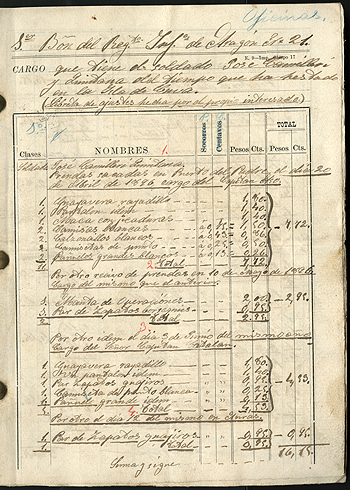
Loan courtesy of the William K. Combs Collection.
Pay books such as this one belonging to José Camilleri Quintana of the 21st Infantry Regiment “Aragon” document the existence of a “guayavera” worn by Spanish soldiers in Cuba. Non-military guayaberas of the period, which are referenced in a number of historical documents, may have resembled these Spanish uniforms or similar uniforms worn by Cuban soldiers of the era.
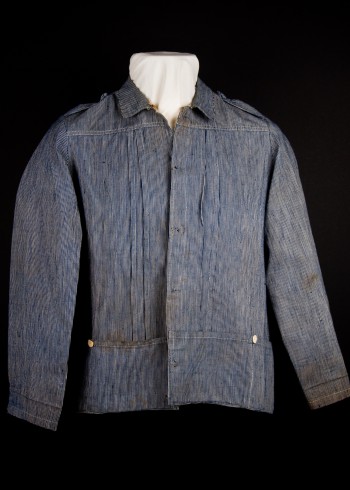
Loan courtesy of the William K. Combs Collection.
Rayadillo.
Late 19th century Spanish records indicate that Spanish soldiers in Cuba wore a field uniform called a “guayabera.” This uniform was made of a linen or cotton fabric called “rayadillo,” the material used for most of the Spanish military’s tropical uniforms of the period.
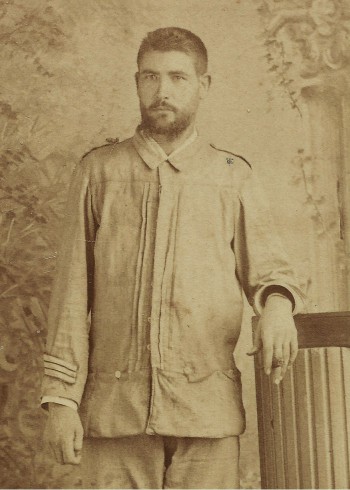
Loan courtesy of the William K. Combs Collection.
As depicted in this photograph, taken in Sagua la Grande, Cuba, Spanish military guayaberas featured a shoulder yoke, pleating and skirt pockets. A soldier’s insignia was loosely attached, permitting easy removal for cleaning.

Loan courtesy of the William K. Combs Collection.
Cotton.
In 1900, a U.S. soldier returning home from Cuba brought this uniform back as a souvenir. This garment may have been worn by a mambi or Cuban soldier who fought against the Spanish during the War of Independence. Like the Spanish military uniforms of the period, it features characteristics that are reminiscent of contemporary guayaberas.

Loan courtesy of the William K. Combs Collection.
In this picture, Colonel Eulogio Sardiñas is wearing a cotton uniform that features at least one chest-level pocket and more standard cargo pockets along the uniform’s bottom. The positioning of these pockets resembles that of today’s guayaberas, suggesting that uniforms like this one may have been an early version of the shirt.

Collection of HistoryMiami. Gift of the Association of Former Employees of El Encanto.
Linen.
By the mid-20th century, the guayabera with two chest pockets and two hem pockets was in common use in Havana, Cuba, though the specifics of the historical development of this style of guayabera are unclear. Havana clothing stores, including the legendary El Encanto department store, carried the shirt, which was sold year round, and advertised during the summer months.

Loan courtesy of Raúl L. Rodríguez.
The early adoption of the guayabera by men in Havana was met with some criticism. In 1948, the Lyceum Lawn Tennis Club published a collection of essays called Uso y Abuso de la Guayabera (Use and Abuse of the Guayabera) that debated the social appropriateness of the use of the shirt in various settings. They and other naysayers, however, lost this battle as the guayabera’s popularity persisted through the 1950s.
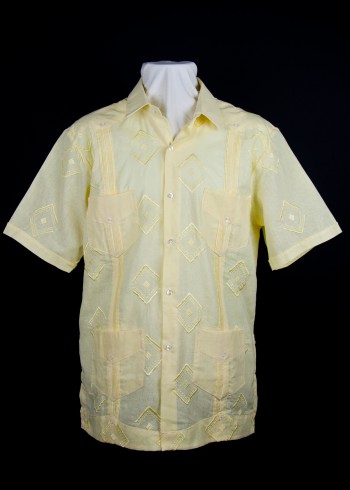
Collection of HistoryMiami.
Linen. Habanera.
In Cuba today, guayaberas such as this one are sold primarily to tourists. After the 1959 revolution, the use of the shirt by locals gradually decreased. Most contemporary Cubans associate the garment with a bygone era, with the government, including the state police, and with the tourist industry.
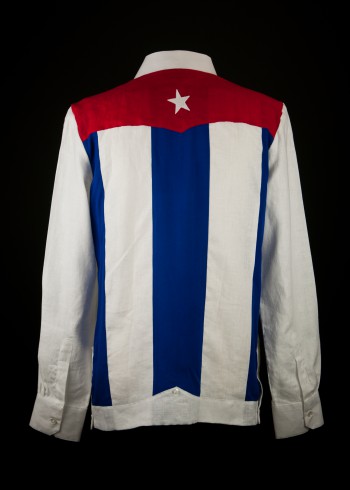
Collection of HistoryMiami.
Linen and cotton.
A handful of contemporary fashion designers in Cuba are attempting to revitalize the shirt’s popularity. This custom-made shirt by Emiliano Nelson is nearly identical to one previously made by Nelson for salsa star Isaac Delgado. One popular notion concerning the design of a typical guayabera is that the shirt’s back, which features a decorative shoulder yoke and multiple stripes of pleating, may have been influenced by the design of the Cuban flag.
Late 19th century archival records describe the guayabera as a shirt or jacket, which may have resembled the uniforms of Spanish and Cuban soldiers of the period. Unlike the contemporary guayabera, these military garments featured four pockets positioned along the hem. Other sources describe its use in the countryside by Cuban landowners and fieldworkers.
By the mid 20th century, the guayabera featuring two chest and two hem pockets had become well established in the country’s urban centers, including Havana. The shirt’s adoption by government officials and workers may have inspired its popularity among city dwellers.
After the revolution of 1959, the garment’s common use in Cuba, along with the country’s apparel industry, gradually faded away. The guayabera is still made there in limited quantities for tourists, but is rarely seen on the streets of Havana today.

The guayabera is also refered to as a “Mexican wedding shirt,” signifying its importance to Mexico’s cultural heritage.
Mexican men wear the shirt as frequently as men elsewhere in Latin America and the Caribbean. The shirt is most noticeably a part of life in the coastal city of Veracruz and the Yucatan Peninsula, both of which have long-standing historical connections to Cuba. One commonly told story of the shirt’s arrival to Mexico states that Yucatecan henequen planters first encountered the garment in Cuba in the late 19th or early 20th century.
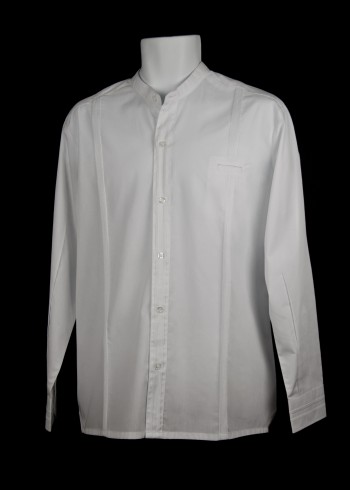
Collection of HistoryMiami.
Cotton. Guayaberas Jack.
Like the guayabera, the Mexican filipina is a lightweight, light-colored shirt that is worn untucked. As its name suggests, the garment is likely of Asian origin. During the 20th century, the guayabera supplanted the common usage of this traditional shirt in Mexico. This was especially the case after Cuba’s revolution of 1959, when Mexican guayabera makers assumed the lead in producing the garment.

Loan courtesy of Fam. Echeverría Zuno.
Polyester. Calesa.
In an effort to humanize the presidency, Mexican President Luis Echeverría, who served from 1970 until 1976, often wore the guayabera. His use of the shirt for government purposes both locally and internationally helped to popularize the garment in Mexico and elsewhere in Latin America. Mexican guayabera manufacturing boomed during his presidency as a result.
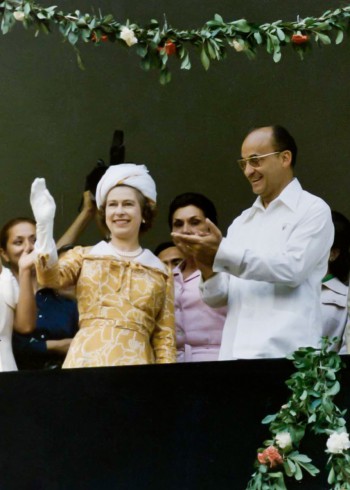
Loan courtesy of Fam. Echeverría Zuno.
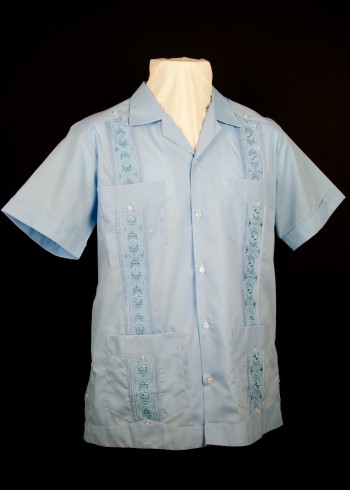
Collection of HistoryMiami. Gift of Guayaberas, Etc.
Poly-cotton. Guayaberas, Etc.
Manufactured in Merida, this guayabera is a typical example of a machine-embroidered Mexican version of the shirt. Perhaps the best-known Mexican contribution to the garment is the vertical stripes of embroidery that decorate its front. Embroidered guayaberas are popular with consumers in various locales, including the U.S.
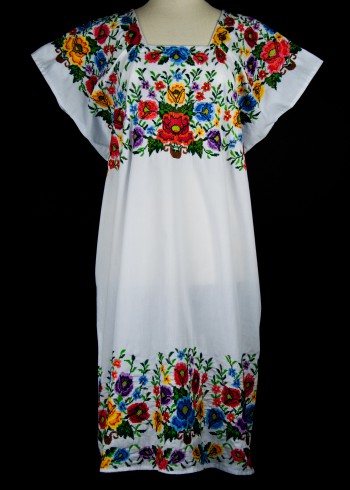
Collection of HistoryMiami.
Simá Chuc family.
The Maya of Yucatan boast a rich tradition of textile embroidery, including that found on the huipil, a traditional women’s garment. This tradition may be an inspiration for the use of embroidery on guayaberas. Cross-stitch huipiles such as this one take six months on average to complete.
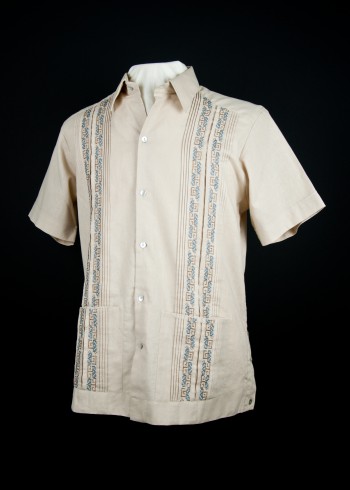
Collection of HistoryMiami.
Cotton-linen. La Plaza del Recreo.
Hand embroidered by Doña Mary Chan May in Tekax, Yucatan, this shirt’s cross-stitch embroidery resembles that used in traditional Mayan clothing such as the huipil. Mayan textile traditions may have inspired the use of embroidery on Mexican-produced guayaberas.
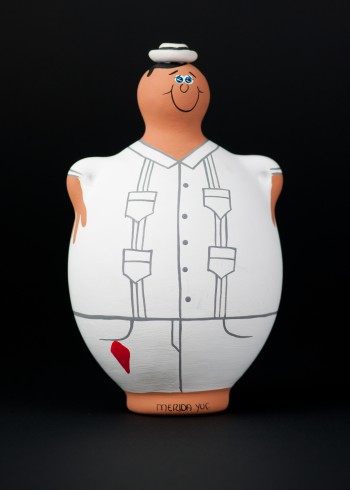
Collection of HistoryMiami.
Tourist shops in Merida sell a variety of merchandise featuring the guayabera. These souvenirs include banks, ashtrays, tic-tac-toe games, nativity scenes, toys and other items.
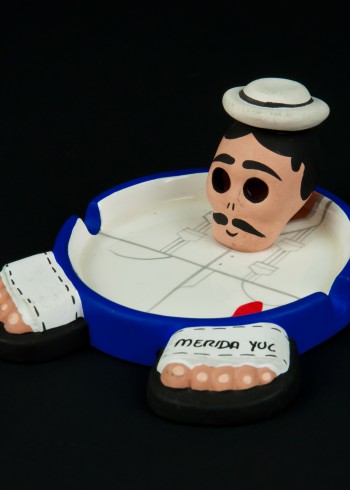
Collection of HistoryMiami.
Tourist shops in Merida sell a variety of merchandise featuring the guayabera. These souvenirs include banks, ashtrays, tic-tac-toe games, nativity scenes, toys and other items.
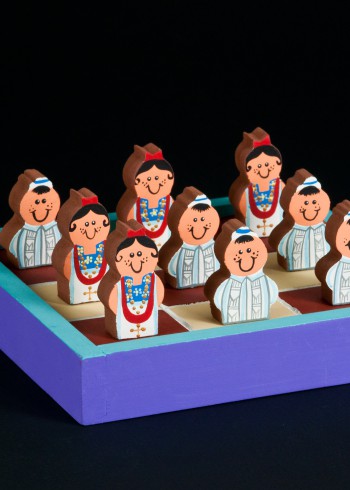
Collection of HistoryMiami.
Tourist shops in Merida sell a variety of merchandise featuring the guayabera. These souvenirs include banks, ashtrays, tic-tac-toe games, nativity scenes, toys and other items.

Collection of HistoryMiami.
Tourist shops in Merida sell a variety of merchandise featuring the guayabera. These souvenirs include banks, ashtrays, tic-tac-toe games, nativity scenes, toys and other items.
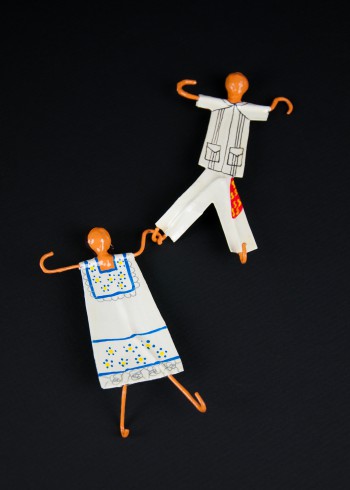
Collection of HistoryMiami.
Tourist shops in Merida sell a variety of merchandise featuring the guayabera. These souvenirs include banks, ashtrays, tic-tac-toe games, nativity scenes, toys and other items.
After production of the guayabera dwindled in Cuba, Mexican manufacturers in the Yucatan city of Merida rose to prominence as makers of the garment. The heyday of Mexican production occurred in the 1970s and is credited largely to former Mexican president Luis Echevarría who promoted the shirt's use domestically and elsewhere by wearing it for government business.
In later decades, increased competition from Chinese factories led to a dramatic reduction of guayabera manufacturing in Merida. The city, however, remains an important hub for the shirt’s production and sale. One stylistic innovation of the shirt is widely recognized as a Yucatecan contribution: the intricate embroidery usually featured on the garment’s front.

The guayabera is currently worn at business meetings, beach weddings, nightclubs and elsewhere not only in Latin America and the Caribbean, but also in parts of the United States such as South Florida, Texas, California and New York, which have large populations from these regions.
The shirt is particularly popular in warm locales where its traditionally lightweight, light-colored design is most appropriate.
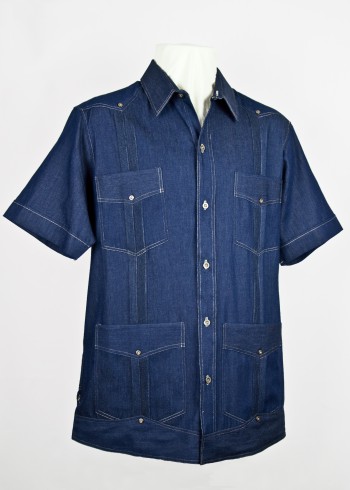
Collection of HistoryMiami.
Denim. Panabrisa.
Contemporary guayaberas are produced in a number of places, including China, Mexico and Panama. Alberto Pons Jacobo, a native of Cuba who settled in Panama in 1953, founded Panabrisa. A major manufacturer of guayaberas in the country, the company is currently run by his son, Alberto Pons. Its denim guayabera, featured here, is a present-day example of the use of non-traditional fabric types.
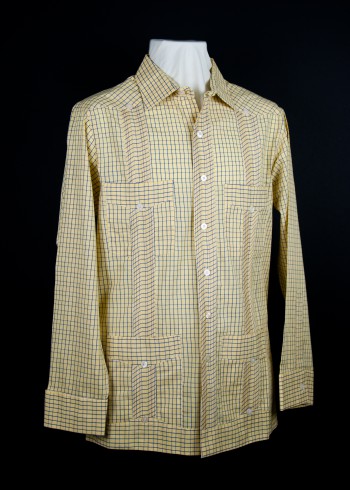
Collection of HistoryMiami. Gift of D’Accord.
Cotton. D'Accord.
Contemporary guayabera designers are utilizing an array of fabric colors and patterns. Miami-based D’Accord began selling guayaberas in 1981, and current director Rafael Contreras represents the second generation of this family business. This shirt is a prototype for D’Accord’s 2013 spring collection.
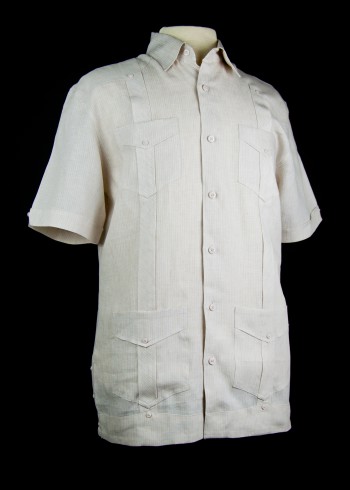
Collection of HistoryMiami. Gift of Perry Ellis International.
Linen. Cubavera.
Established in 2000, Cubavera is a brand of Perry Ellis International, headquartered in Miami and directed by Cuban-born businessman George Feldenkreis. The wide appeal of Latin culture is an inspiration for the brand's designs. Cubavera guayaberas are sold at Macy's department stores, extending the guayabera's reach and popularity to the mainstream clothing market.

Collection of HistoryMiami. Gift of The Guayabera Lady.
Georgette. The Guayabera Lady.
In the past decade, guayabera-inspired pieces for women have entered the scene in earnest. These items include a variety of garment types. Cuban-born Miami designer Berta Bravo, also known as "The Guayabera Lady," designed this tunic. Bravo’s parents were long-standing guayabera sellers in South Florida.
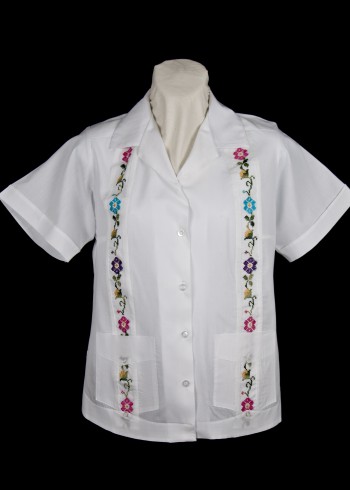
Collection of HistoryMiami. Gift of Ravgo.
Poly-cotton. Ravgo.
Although customarily a man’s shirt, guayaberas have been made for women since at least the 1950s. Today, a wide variety of guayabera tops exist for women. Mexican manufacturer Ravgo, founded more than fifty years ago, crafted this garment that features embroidery, a recognized Mexican contribution.

Collection of HistoryMiami. Gift of Arcadio Díaz.
Linen. Arcadio Díaz.
The guayabera’s look and cultural importance have inspired fashion designers internationally. Born in the Dominican Republic, designer Arcadio Díaz currently works in Venezuela, where he specializes in guayabera-inspired clothing for women, including dresses.
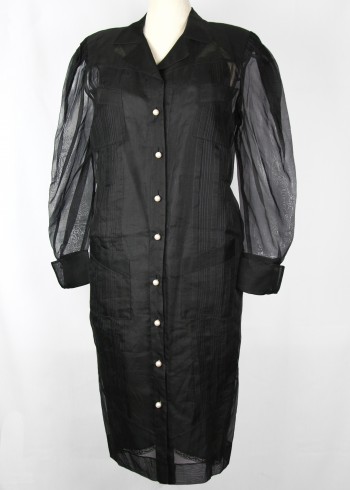
Loan courtesy of the Celia Cruz Knight Estate.
Silk. Irma Peñalver.
GRAMMY® Award winning recording artist Celia Cruz wore this custom-made dress at a 1993 Chanel fashion show on South Beach. Crafted by Los Angeles-based seamstress Irma Peñalver, the piece is made of Chinese silk and features pearl buttons.
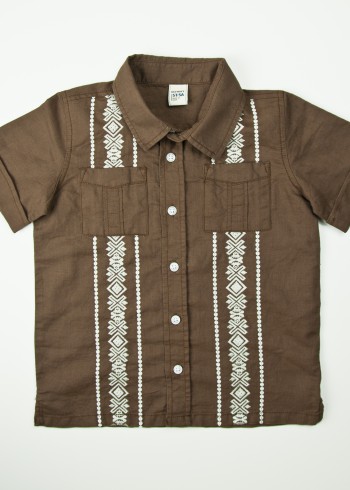
Collection of HistoryMiami.
Linen-cotton. Old Navy.
Guayaberas for boys have been in existence since at least 1944. Mainstream U.S. retailer Old Navy has offered various examples, including this piece for toddlers.
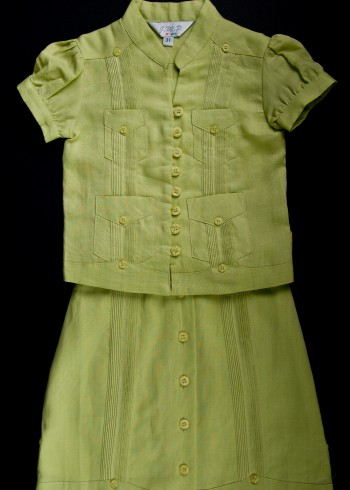
Collection of HistoryMiami.
Linen. JMP.
Based in Miami, JMP entered the guayabera business during the early 2000s. The company has focused on producing pieces for the whole family, including a variety of items for toddler girls such as this matching top and skirt.

Collection of HistoryMiami. Gift of Guayaberas, Etc.
Denim. Guayaberas, Etc.
Guayabera-inspired pieces are even made for infants. Guayaberas, Etc., run by Cuban-born entrepreneur Rene La Villa, boasts five stores in South Florida and Texas that sell guayaberas for men, women and children.
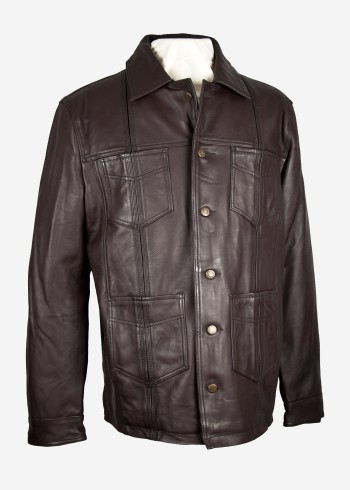
Collection of HistoryMiami.
Leather. mycubanstore.com.
Within the guayabera industry, inventive pieces are a common sight. Mycubanstore.com, an online business headquartered in Miami, created this jacket in response to feedback from customers in the northern United States.
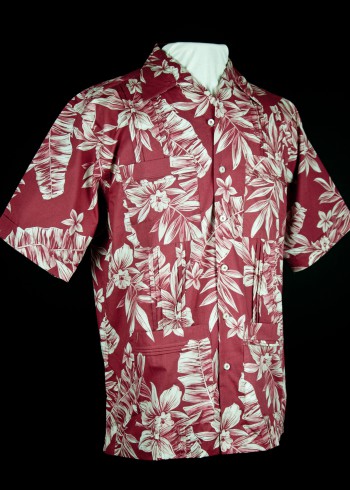
Collection of HistoryMiami.
Cotton. Aloha Señor Clothing Company.
Representing a new development in men’s resort wear, the Hawaiiabera is a synthesis of the Hawaiian shirt and guayabera; it combines the colorful, floral fabric of the former with the functional pockets and decorative pleating of the latter. The shirt’s designer is based in San Antonio, Texas.

Collection of HistoryMiami.
Cotton. Milou Couture.
Apparently no fashion phenomenon can escape the business of clothing for pets. Capitalizing on the popularity of outfitting man’s best friend, Pennsylvania-based Milou Couture designs a variety of garments for dogs.
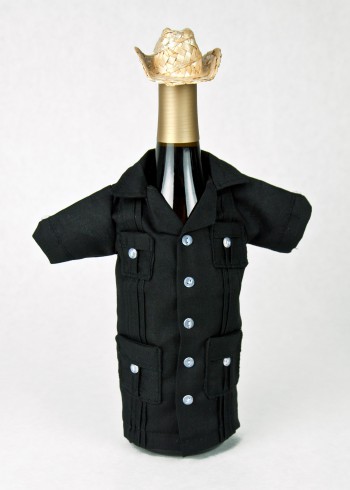
Collection of HistoryMiami. Gift of Guayaberas, Etc.
Poly-Cotton. Bottleneer.
Based in Miami, Bottleneer specializes in innovative accessories for wine bottles. Guayabera covers such as this serve a purely decorative purpose.
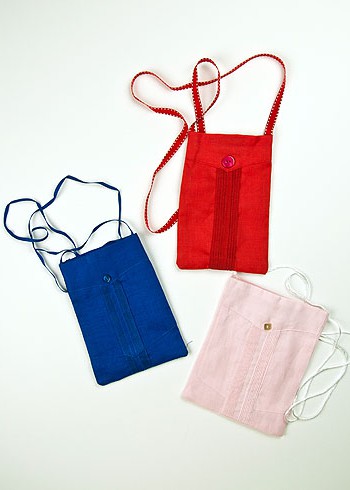
Collection of HistoryMiami. Gift of The Guayabera Lady.
Linen. Berta Gonzalez.
Handmade by Berta Gonzalez, an elder of the guayabera tradition in Miami, these purses are designed to be used as travel pouches, useful for carrying a passport, phone and other items.
Recent trends in the use and design of the shirt represent a dramatic break with the past as up-and-coming and established designers, tailors and other makers and sellers of the garment reinvent the tradition. Clothing corporations, boutique stores, online businesses and fashion designers are introducing new fabric types and styles, as well as new imaginative designs. They are also targeting a more diverse consumer base.
Designers and business owners in Miami, Florida, many of whom are members of the region’s Cuban community, are creating a global hub for innovation. They and others in the industry are producing not only inventive designs for men, but also guayaberas and guayabera-inspired items for women, children and even pets. The shirt’s current availability in both high-end shops and mass market department stores has extended its reach and popularity to more than just Latin American and Caribbean customers.
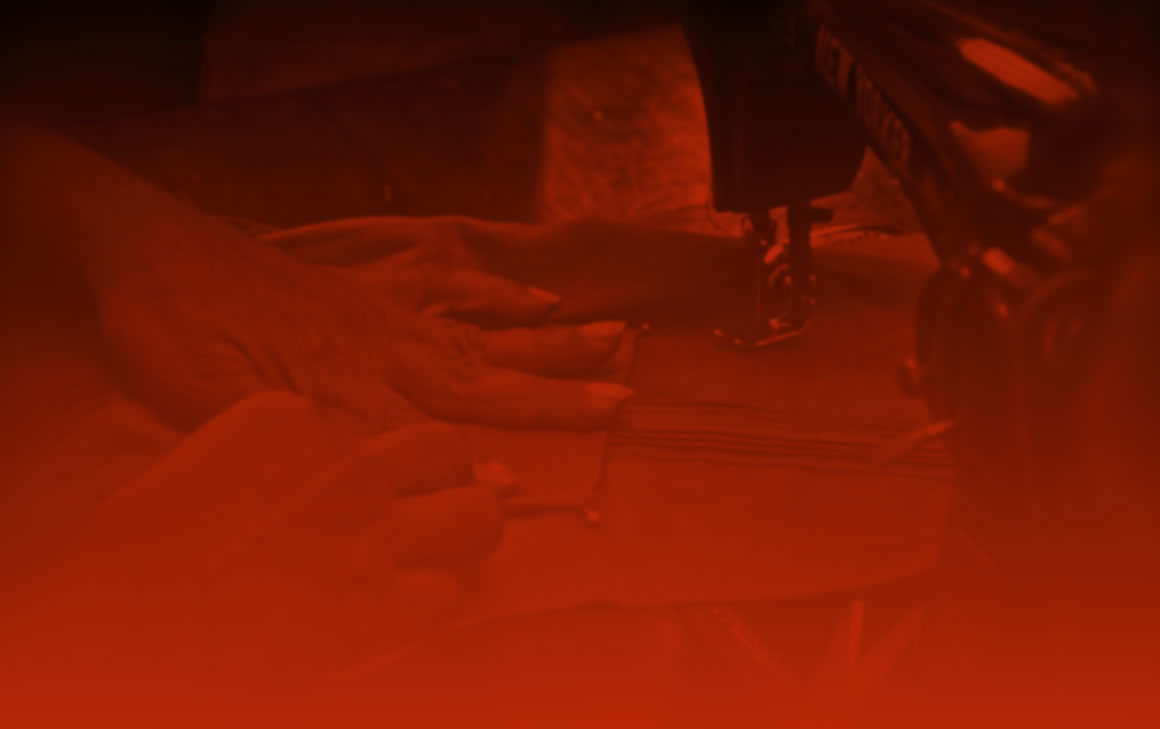
Throughout its history, the guayabera has been crafted by individual artisans such as designers, tailors and seamstresses, and also by factory workers in industrial settings. When compared, the former usually produce more expensive, higher quality shirts in smaller quantities, while the latter focus on larger quantities and less expensive materials. Industrial manufacturing is increasingly the norm. Guayabera factories are currently located in China, Mexico, Panama, Ecuador and elsewhere.
The shirt is currently made from a variety of fabrics; historically, however, the shirt has been crafted from linen or cotton. The typical tools used to create the garment include measuring devices, cardboard patterns, scissors, sewing machines, and more. The complicated process of crafting the guayabera includes numerous steps.
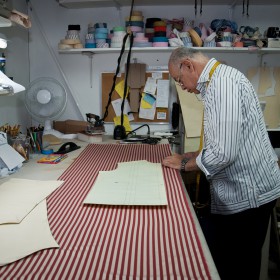 Step one
Step one
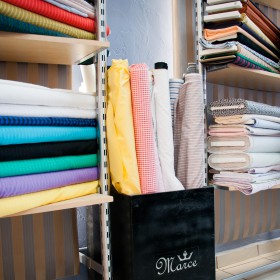 Step two
Step two
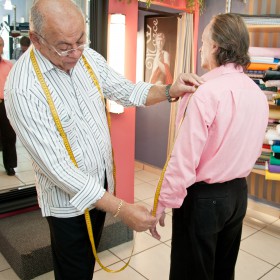 Step three
Step three
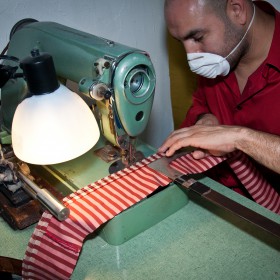 Step four
Step four
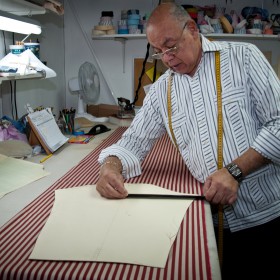 Step five
Step five
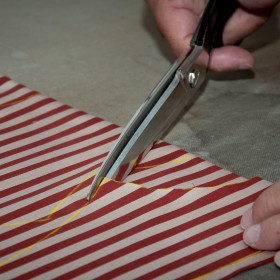 Step six
Step six
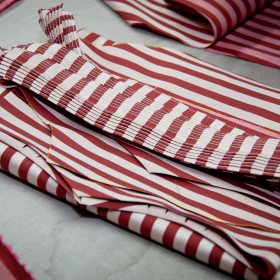 Step seven
Step seven
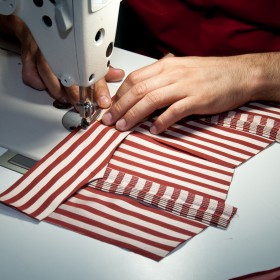 Step eight
Step eight
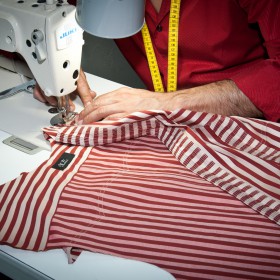 Step nine
Step nine
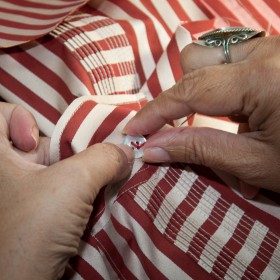 Step ten
Step ten
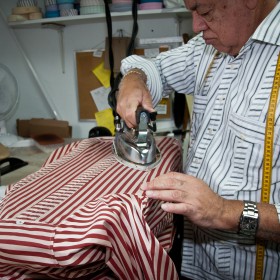 Step eleven
Step eleven
 Step twelve
Step twelve
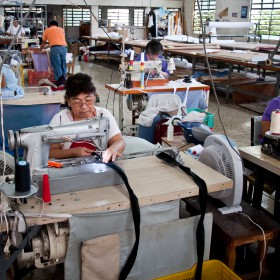 Step one
Step one
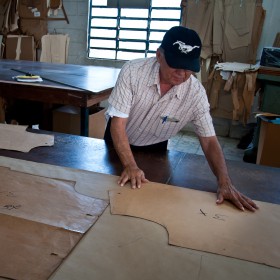 Step two
Step two
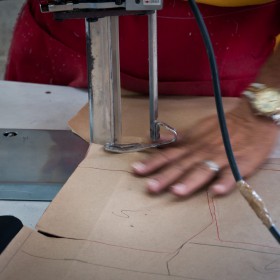 Step three
Step three
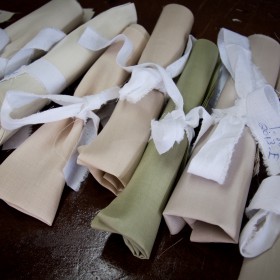 Step four
Step four
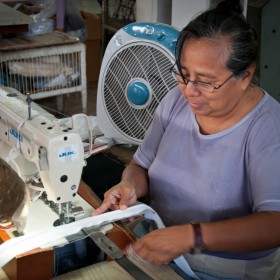 Step five
Step five
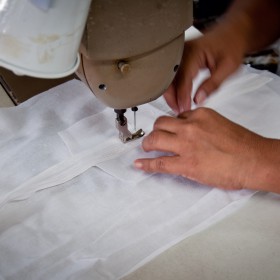 Step six
Step six
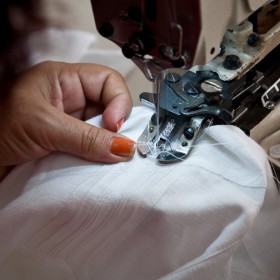 Step seven
Step seven
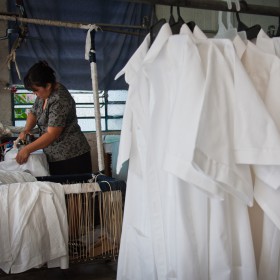 Step eight
Step eight
 Step nine
Step nine
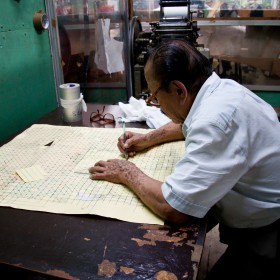 Step ten
Step ten
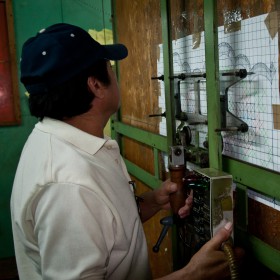 Step eleven
Step eleven
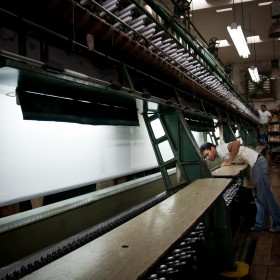 Step twelve
Step twelve
 Step thirteen
Step thirteen
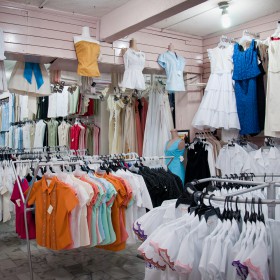 Step fourteen
Step fourteen